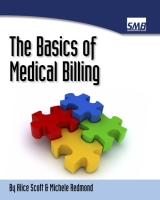Monday, January 5, 2009
New Year - New Blog
Thanks
Michele
Tuesday, December 16, 2008
Misconceptions of increasing accounts receivable Part 2
It actually makes a huge difference if the patient pays their copay at the time of the visit. Copays are supposed to be paid at the time of service and the patients know this. The whole point in developing copays was to make a set amount that the patient paid at the time of service. This avoids the need to wait for the insurance carrier to make payment before the patient amount can be determined and billed.
The chance of collecting the copay if it is not collected up front is greatly diminished. If you are a specialist the patient may be seen only one time. If they are not coming back to your office, if is harder to collect that copay. The patient may move out of the area. There are a lot of things that could go wrong.
Of course there is always a patient that has a very good reason for not being able to pay the copay. There is an exception to every rule. If you have a patient who comes in regularly and pays their copays regularly but for some reason is unable to pay it at this visit, it is very likely that they will pay the copay.
Copays should be collected before the patient is seen. If the patient has to wait before seeing the doctor they may be in a hurry to get out of the office once the appointment is over. Also if they receive news during the visit that is upsetting they are not going to want to stop and pay their copay. The person at the front desk should ask for the copay when the patient checks in.
Some may think that the copay doesn't add up to that much but in today's insurance world, copays are getting larger and larger and they do add up. We were in an office once where the doctor saw an entire family of five. None of the family members ever paid their copays. The doctor was not aware of this and the office manager only sent out patient bills every six months - which the family ignored. They owed the doctor over $5000 in copays and that was just one family.
Make sure your office is collecting the copays up front. It can make a big difference in the bottom line.
Medicare Credentialing - How Long Does it Take?
Many providers call me to ask how long it takes to become credentialed with Medicare. The problem is the process can vary based on a lot of things. For one, it varies from carrier to carrier. Each Medicare region has a different carrier and those carriers can switch if the contract gets awarded to a different carrier.
Our area, upstate NY had the same carrier for over 14 years and credentialing only took about six weeks. But on September 1st, 2008 the carrier changed and now credentialing takes more like 10 weeks. Part of that is due to the transition.
There is no way to give an exact time on how long it will take, but one thing that greatly affects the time is if the correct forms are filled out right the first time. If the correct form isn’t used then the form will be returned to the provider that is applying and they have to start from scratch. It could take them up to 120 days just to return the form so four months was wasted on nothing.
If the correct form is used but it is not completed correctly then they have up to 120 days to request the corrections. They usually allow 30 days for the corrections to be submitted. Once they receive them the clock starts over. If you are applying to Medicare and you want it done quickly you need to make sure you complete the correct form and complete it right. For more information on which form you need and how to complete it correctly visit http://www.medicalbillinglive.com/medicare-credentialing.shtml .
The good news is that when you complete the form you tell them when you wish to have your participation to start. So if you are submitting a credentialing application in December to begin seeing patients in January, but they don’t approve you until March, the participation date is still for January. That means that you can see patients but you must hold the billing until the application is completed. So at least you can treat the patients and you will be paid, you just have to wait for the process to complete.
There is no way to ever be sure the form is completed 100% correctly but if the person completing it has experience with these CMS forms it is more likely to be correct on the first submission. This will cut down on the time it takes for the application to be completed.
Monday, November 17, 2008
Out of Network Coverage for Drug & Alcohol Rehab
We have gotten many phone calls from people who have had a family member that was in an inpatient drug and alcohol rehab facility that didn’t accept their insurance. Of course when the family member was admitted it was a crisis situation, and there was little choice as to what options were available. In many cases it is actually life or death. They certainly can’t be driving around looking for a participating facility.
The problem is that these out of network facilities require payment for the services up front. Since they do not participate with the insurance, they need to make sure they will be paid. The only real way for them to ensure payment is to get it in advance. Again, due to the situation, the family has no choice so they borrow, or charge, or whatever they need to do at the time.
The insurance companies usually require that the charges be submitted on a UB04 form, which is the universal claim form for facility billing. It isn’t that they don’t want to pay, but the information that they require is not on the walk out statement that the facility has provided to the patient. The facilities don’t know how to complete these UB04 forms, and they’ve already been paid. Many times they truly want to help the patient get reimbursed but they simply don’t know how.
We have found a way to help out both the patients and their families, and the facilities. Solutions Medical Billing Inc has teamed up with Xena health to provider a service of taking all of the necessary information from the facility and putting it on to a UB04 form to submit to the insurance carrier. Now patients have a way to get the proper forms filled out and submitted to their insurance carrier so that reimbursement can be made promptly. For more information on how this service works, visit www.facilitybilling.com
Misconceptions of Increasing Accounts Receivable
Misconception # 1
Alice and I had the honor of speaking at the Mid York monthly billing meeting in
Since Alice and I are in a lot of medical offices we see a lot of different situations. Most providers are looking for ways to increase their accounts receivables. Whether they are just looking to make more money, or if they plan on expanding, or if they are not bringing in enough money to cover the expenses of the office, they all are looking to bring in more money. The problem is most of them have the wrong ideas on how to accomplish that.
The very first misconception we spoke on is one of my personal favorites. Many doctors will say to us “If I want more money, I need to see more patients.” What I say to them is that if they want more money, they need to make sure they are getting paid for all the patients they are already seeing and all the services that they are performing.
Many doctors are not even aware of how many patients they are seeing, how much is being billed out, how much is coming in, and how much is being written off. Are the write offs due to contractual adjustments? What percent of claims are being denied? Is their staff taking care of the claim denials, or just writing them off. A survey was done by the Medical Association of Billers in 2004 and they found that only 45% of respondents had ever appealed a denied claim. That means that 55% of respondents do not take care of denied claims. That can be a huge money loss for the provider.
Is your staff running and working regular aging reports? This is another area that much money can be lost. Are copays being collected? Is patient billing being done? If your claims are being submitted electronically, are the electronic reports being downloaded and handled.
As you can see there are many ways that money can be lost in a medical office. If a doctor wants to increase his/her accounts receivable they should first look into if they are collecting all they should be on the patients that they are currently seeing. If they are not collecting all that they should, bringing more patients into the system will just make it worse.
Wednesday, October 15, 2008
Coinsurance Uncovered
Now we’ve covered copays and deductibles, that leaves coinsurance. Coinsurance is a term used by the insurance carriers to refer to the amount that the patient is required to pay for a medical claim.
If a patient has an indemnity insurance plan then they would not have a set copay or a set amount that they are responsible for. The amount the patient will owe will be determined when the claim is processed.
For example, if the patient has an 80/20 indemnity plan, then the insurance carrier will pay 80% of the allowed amount and the patient is responsible for the remaining 20%. So if a provider bills $120 for an office visit and the insurance company allows $100, then the insurance would pay the provider $80 and the patient would owe $20.
The problem this presents for the provider is that the patient cannot be charged for their portion at the time of the visit. Since the amount the patient owes cannot be known until the claim is paid, the provider must wait until the insurance carrier processes the claim before they can bill the patient.
Many times with indemnity plans the patient also has a deductible that must be met first. After the deductible is met then the insurance carrier will begin to make their payments. Again, even when you know the patient has a deductible you can’t charge them up front. You must wait to find out what the insurance carrier is going to allow for your services. You can only charge the patient the allowed amount, not the billed amount.
Coinsurances can vary depending on the plan. They are not a set amount like 80/20. They can be 70/30, 90/10, etc. You should call when the patient comes in initially to find out what type of insurance plan they have. Just advise the patient that they will be billed for their responsibility as soon as their insurance carrier makes payment.
This is a good example of why it’s important to make sure your claims are being submitted and processed timely. If you are billing a patient for their portion 2 weeks after their visit instead of 6 months, you are more likely to get paid.
Monday, October 13, 2008
Medicare Applications – Which Form Is Used To Become A Medicare Provider
If you are a solo provider, can you bill under a tax ID number (EIN number) or do you have to use your social security number? Is it necessary if you use a tax ID number to apply for a group Medicare number? And why would you need to reassign benefits to yourself?
Well it’s really not as complicated as it seems. If you are a solo provider and you are using your social security number for your tax ID number then you need to complete an 855I, 588 EFT, and a CMS 460. The CMS 460 is the participating provider agreement. You only need to complete this if you choose to be a participating Medicare provider. The 588 EFT is the Electronic Funds Transfer form. Medicare requires that you accept EFT and they will transfer your payments directly into your bank account. The 855I is the individual provider application.
If you are a solo provider who is going to bill under a tax ID number but you are a sole proprietor you also would need to complete the 855I, 588 EFT and the CMS 460.
When applying for a group, you will need to complete an 855B, an 855I for each provider in the group, an 855R for each provider in the group, a 588 EFT, and a CMS 460. The 855B is the group application and the 855R is to reassign the benefits of each provider to the group. If you are a solo provider but you have formed a corporation, you need to apply for a group application for the corporation.
The forms are available on the internet. You must complete the appropriate forms and send them in to the Medicare carrier for your area. It is crucial that you complete the forms correctly to avoid delays. If your application is not completed completely or correctly the carrier will request the additional or corrected information from you. If you do not respond or respond timely your application may be closed.



